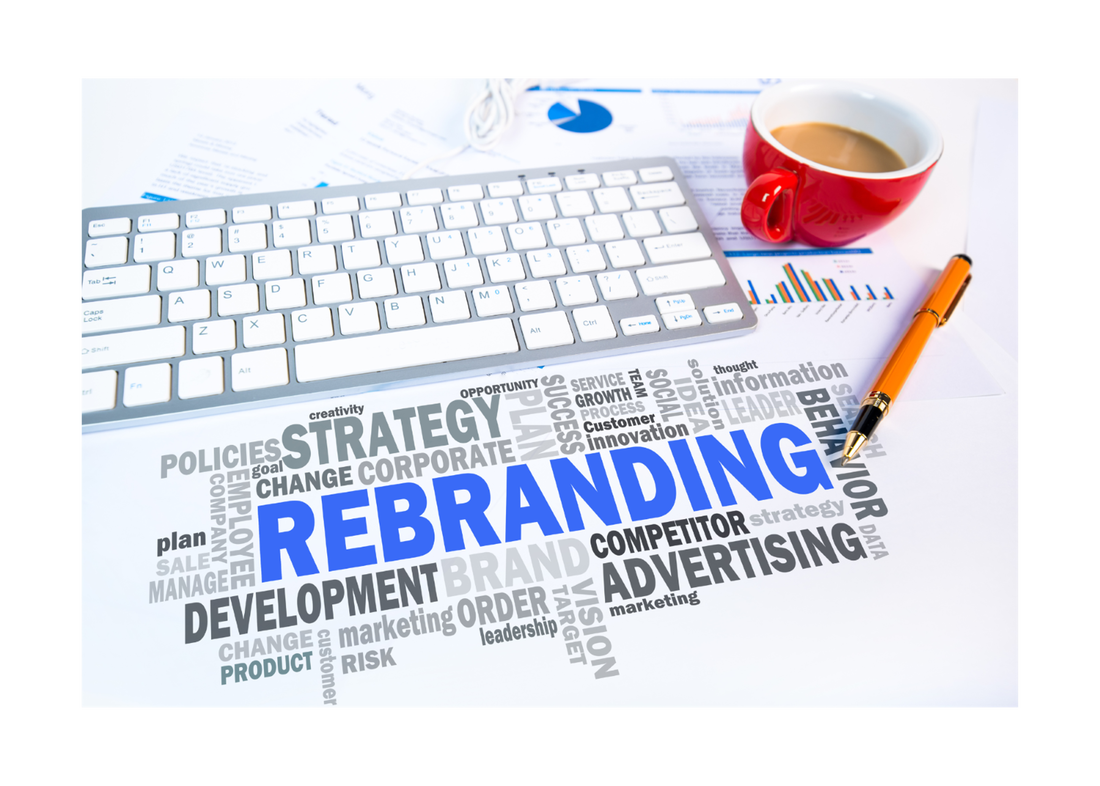Exclusive Access Granted To Our Blog!
|
To establish a brand requires a great deal of time and effort, along with some strategic thinking. You certainly don’t want to put in all the work for it not to have good success. Since this is an area of business that’s easily misunderstood, here are the biggest mistakes people make with branding so you can avoid them. Forgetting to Think Strategically Branding is part of your overall business plan, so you need to think strategically about it. It needs to connect to your “why” and your broader business goals. Go back and review the reasons why you’re running this business. Take some time to clarify what you hope to achieve and how your branding will help you do this. Your Brand Is Not Your Logo Many businesses make the huge mistake of thinking a brand is a logo or a set of design features. While consistent design is an important part of branding, what it’s really about is your messaging and the image you’re creating in the minds of your target market. This message tells people how your offerings uniquely benefit them. Being Generic The whole point of your brand is to differentiate your business from others in the market. If you can do this successfully, you can operate as efficiently as other companies that have more resources to spend on marketing and advertising. Focus not only on what you do but what you do differently than others. Assumptions Instead of Facts Don’t make the mistake of building your brand based on assumptions. You think you know how people see your company, but this isn’t good enough. You need to conduct thorough marketing research and base your decisions on facts and feedback from your audience. Inconsistency and Disconnect If your branding is giving people mixed messages, it won’t work to engender trust. The message needs to be consistent wherever you have communication with your audience. The design features, the tone, and the unique benefits of using your products all need to be consistent. Clever But Not Clear While it’s nice to have a message that’s unique and clever, the most important thing is for it to be clear. Branding is a form of communication. People should understand your message easily at a glance. Don’t get so creative that it becomes hard to understand. It’s All About You While you’re talking about your products and services, the real message of your branding should be what using your products does for your customers. Focus on their needs and how their lives will be improved by using your product. Forgetting to Update The needs of your market and the business landscape change over time. Your business might also change, offering a new product line or reaching out to a new segment in the market. When this happens, your branding needs to reflect these changes. Sometimes, you need to assess and update. Do you want to learn more about getting your branding right? Meet Trey Simon, Brand Performance Coach Hey, I’m Trey Simon. Within the past 15 years, I’ve helped hundreds of entrepreneurs turn vague ideas into clear-cut visions which generate leads & sales month after month. It’s finally time for you to get into the driver seat of your business, with our help of leveraging social media platforms, SEO tactics, email marketing automation strategies as well as untouchable creative design. To work with me, schedule a 1-on-1 demo to learn more about developing your brand identity and using the right online marketing tools: HERE About the Author Pat Simes is a Business Strategist, blogger and Founder of Innovative Business Solutions and Innovate Academy. She currently resides in the Midwest and is committed to inspiring and empowering entrepreneurs to transform their vision to reality.
0 Comments
Storytelling is highly effective in any kind of business. Stories capture the attention of your audience and make your business relatable. This is why they’re so useful in rebranding. An essential part of any rebranding strategy is to develop and tell a good brand story.
Why We Love Storytelling Why is storytelling so important in branding? Your brand needs to be memorable and relatable. It needs to impart your company’s personality and emphasize how you’re unique. These are all things that can be done through a good story. In fact, some people are loyal to brands solely because of their story. You might love a local coffee shop that stands up against the big nation-wide chains, or a healthy organic restaurant with a mission to offer ethical and environmentally-friendly food. These brands are strong because of stories that emphasize the values they share with their customers. Stories work especially well in the digital age where people are flooded with advertising and marketing messages all day long. Your story helps your brand cut through the noise. What’s Your Story? Your brand story is the genesis story of your company. It tells why you founded it and how you grew it to its current state. It might include things like: How you grew from humble beginnings and overcame overwhelming odds How you stuck with your principles when selling out would’ve been easier How you solved a problem and then decided to offer this solution to the world at large How you want to change the world and why you’re trying to do it Like any good story, yours starts with a “why.” It has ups and downs, plot twists and drama, and a vision for the future, all centered around your company and its brand. How to Discover Your Story You’re not starting from scratch with your brand story. It’s already there, you just need to figure out how to tell it. Start by identifying your “why.” Why does your company exist? What is your mission? What motivates you to do what you do? How do you contribute? Brainstorm several story ideas. Write a few different versions of the basic story that emphasize different aspects of your business. If you’ve already clarified what your unique value is, write a story that explains this along the way. You may also write a few different versions to appeal to different segments of your market. Once you’ve chosen the right one, simplify it so it gets straight to the point. Give it the “so what?” test. When people are reading your story, they’re thinking, “so what?” In other words, “What’s in it for me?” It should be about your company, but it should also tell the reader what you do for them. A good brand story is straightforward and easy to understand. Once you have it finished, decide when and where you’ll use it, and create shorter and longer versions. Integrate it into your branding and it will drive home the unique value you offer. Do you want to learn more about branding your business the right way? Meet Trey Simon, Brand Performance Coach Hey, I’m Trey Simon. Within the past 15 years, I’ve helped hundreds of entrepreneurs turn vague ideas into clear-cut visions which generate leads & sales month after month. It’s finally time for you to get into the driver seat of your business, with our help of leveraging social media platforms, SEO tactics, email marketing automation strategies as well as untouchable creative design. To work with me, schedule a 1-on-1 demo to learn more about developing your brand identity and using the right online marketing tools: HERE About the Author Pat Simes is a Business Strategist, blogger and Founder of Innovative Business Solutions and Innovate Academy. She currently resides in the Midwest and is committed to inspiring and empowering entrepreneurs to transform their vision to reality. Your brand is a major source of value for your company. With a strong brand identity, you can do more with fewer resources to reach your audience by creating an image in their minds of how you uniquely meet their needs. But branding is about much more than just logos. Here are the 5 key elements of a strong brand identity.
A Purpose Your branding tells people your reason for doing what you do. It explains how you want to change the world for the better. At a glance, people can understand the values that are at the core of your philosophy and products. To start creating your brand identity, spend some time thinking about your “why.” Why does your business exist? What is it you hope to change in the world to make it a better place? What solution does your business bring? Market Position Your brand identity tells people what position you occupy in the market. It says not only what you do, but how you do it uniquely from anyone else: “We’re the ones who ____.” In a market full of other businesses show how you are different and how. Part of successful branding is to understand your industry and the unique place you fill in the market. It involves getting in touch with your natural strengths so you can play to them. Your Company’s Personality Your company should have a likeable and relatable personality that resonates with your audience. Your brand communicates this personality to your audience, speaking to them in their voice and tone. The personality also makes it memorable. What is your brand’s personality? You can figure this out through research and natural strengths, but also by asking your customers why they prefer buying from you and not someone else. Consistent Design Elements Although branding is more than just logos and colors, design elements are important. They work on a subtle level. Wherever your audience member encounters your brand, they see the same design features, which tells them it’s you and shows that you’re consistent. Design elements includes name, logo, colors, banners, fonts, and so on. Your Audience Your content is targeted to a specific audience, talking about their problems and addressing their needs. For a strong brand identity, you need to know your audience well and focus on them, not you or your products and services. Your branding discusses your offerings in terms of the unique benefits to users. How to Create a Strong Brand Identity Branding isn’t second nature to most companies. It requires some planning and strategic thinking to develop a strong brand identity. Creating a strong brand starts with clarifying your business goals and your strategy for achieving them. Your brand needs to be in line with your core values and unique value proposition. The next step is to research your audience and your industry, so you can understand what position you occupy in the market. A detailed customer profile helps you understand your target market so you can address their needs and speak their language. Once you’ve clarified the fundamentals of your business and gained a thorough understanding of the marketplace, you’re ready to create a branding message and unique value proposition. With this in hand, you’re ready to go about implementing your brand and monitoring your results. Do you want to learn more about creating a strong brand identity? Meet Trey Simon, Brand Performance Coach Hey, I’m Trey Simon. Within the past 15 years, I’ve helped hundreds of entrepreneurs turn vague ideas into clear-cut visions which generate leads & sales month after month. It’s finally time for you to get into the driver seat of your business, with our help of leveraging social media platforms, SEO tactics, email marketing automation strategies as well as untouchable creative design. To work with me, schedule a 1-on-1 demo to learn more about developing your brand identity and using the right online marketing tools: HERE About the Author Pat Simes is a Business Strategist, blogger and Founder of Innovative Business Solutions and Innovate Academy. She currently resides in the Midwest and is committed to inspiring and empowering entrepreneurs to transform their vision to reality. Branding has an enormous impact on every aspect of your business. Whether you’re just getting started creating a brand identity or you’re in the process of rebranding because of changes in the market, you need to spend some time clarifying the messaging you want to create and deciding how to implement it. Here are the 6 steps for creating a strong brand. Create a Branding Strategy Your branding strategy clarifies which direction your branding should go. It means creating your messaging with an eye toward the future of your business. This step in the process starts with identifying your business goals and how your brand fits into them. How does it help you to achieve them? Research Your Market Before you start making any major decisions, you need to understand where your business fits into the market and the position it plays in the minds of your audience. Research needs to be conducted in a few key areas. Your Target Market. You need to create a detailed customer profile and identify the needs that your offerings fulfill for your audience. You also need to understand how your audience sees you, since “brand” is essentially an image that exists in their mind. Your Products and Services. Branding revolves around a promise you make to your audience. What is your promise? What need does your offering speak to and how does it uniquely solve the problems of your target market? Your Industry. Research the market and see what is happening in your industry in order to clarify your unique position in relation to others. People will love your brand because of its uniqueness. Create Your Messaging and Unique Value Proposition Now that you know the market and your position in it, create a message that explains to your audience how you uniquely fulfill their needs. This message in some form will be conveyed through everything you do and at every touchpoint with your audience. This message should focus on the customer and the benefits your offering provides them. How does using your products make the customer’s life better? It should emphasize what sets you apart from other, similar businesses. Create a Branding Plan Now, choose the personality, tone, and design elements that will help to convey this message to your audience. Your planning should include where you will communicate with your market and what content you will offer them. For branding to work, everything should be consistent and in harmony with the message you outlined in the previous step. Implement Your Brand Identity The process of branding is never truly finished. Once you implement it, you’ll need to monitor and keep gathering feedback from your market to make sure the message is hitting home. From time to time, you’ll also need to consider rebranding. Companies re-brand when there are significant changes in the market, changes in their company, or a new segment of the market they need to target. In order to keep up to date with these changes, they have to tweak or overhaul their branding so that it will achieve their new goals. Do you want to learn more about developing the right brand identity? Meet Trey Simon, Brand Performance Coach Hey, I’m Trey Simon. Within the past 15 years, I’ve helped hundreds of entrepreneurs turn vague ideas into clear-cut visions which generate leads & sales month after month. It’s finally time for you to get into the driver seat of your business, with our help of leveraging social media platforms, SEO tactics, email marketing automation strategies as well as untouchable creative design. To work with me, schedule a 1-on-1 demo to learn more about developing your brand identity and using the right online marketing tools: HERE |
AuthorPat Simes Archives
July 2024
Categories
All
|








 RSS Feed
RSS Feed